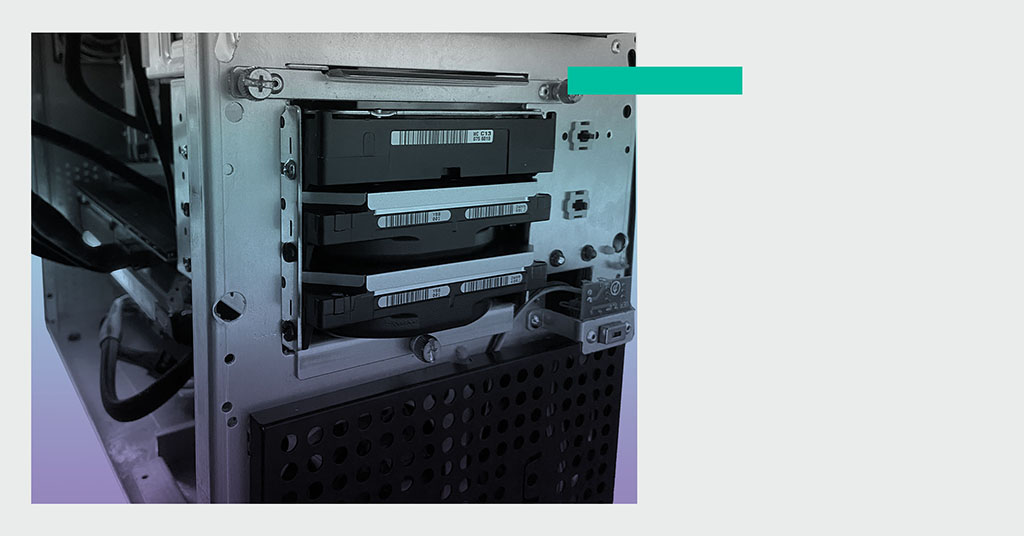When Shannon Hames, a public relations specialist at Western Digital, first heard about the cryptocurrency Chia, she was curious about its buzz as news cropped up on the storage-enabled virtual coin. “It felt like everybody was talking about it,” said Shannon.
Shannon had already been mining cryptocurrencies, like Bitcoin and Ethereum, along with her husband for several years, but Chia’s premise as a cryptocurrency that makes use of storage sparked her intrigue. “It was interesting to me because it was a different way to mine cryptocurrency,” she said.
Of space and time
To secure transactions and maintain decentralized control, cryptocurrencies utilize a network of connected computers, which verify transactions in a process called “mining.” In return for performing this work, there is a reward of coin. Some cryptocurrencies, like Bitcoin, accomplish this process by following a concept called “proof of work,” which uses computation. In contrast, Chia follows a concept called “proof of space and time,” which uses storage space.
“Chia is using your storage, and it could be SSDs [solid-state drives], it could be HDDs [hard-disk drives],” said Shannon. “You could mine it on your phone if you wanted to. The idea is that everybody has some spare storage.”
With this concept in mind, Shannon saw an opportunity to repurpose a few hard drives that she had around the house. “I definitely had some storage that had been taken out of desktops and weren’t being used anymore. It was just sitting there. Why not actually utilize it?”
The possibilities of storage
This new use-case for her hard drives has provided Shannon with even greater insight into the role that storage plays in powering the world’s digital experiences, a theme she often encounters through her work.
In particular, her work has enabled her to appreciate the broad applications of storage. “You start thinking about all the kinds of things that storage is involved in, all the things that wouldn’t be possible without storage, and that, ultimately, leads you to think of other possibilities that could happen with storage,” she said.
“That’s really kind of where [my] interest with Chia was,” said Shannon. “It’s another possibility that has opened up because of storage.”

Environmental concerns
Another factor that prompted Shannon to explore Chia was its claim as an environmentally friendly cryptocurrency. Chia has built its lexicon around this greener claim. Instead of “mining,” it refers to this process as “farming”; the coin itself is named after a seed. Because Chia uses storage instead of computing power, the cryptocurrency may be potentially less energy-intensive, according to the creator of Chia.
The environmental impact of cryptocurrencies has been a topic of increasing concern. In an often-cited analysis tool from Cambridge University, researchers suggest that Bitcoin mining consumes more electricity per year than some countries.
These have also been considerations for Shannon during her own cryptocurrency endeavors. “It has been a concern for my household even though it’s very small-scale mining,” she said. “We are always balancing the amount of power usage versus how much we were actually able to mine.”
Farming Chia
With her background knowledge on cryptocurrencies, Shannon found the setup for her Chia farm to be relatively straightforward. “If you know how to install a hard drive into a computer, then that’s the hardest, most time-consuming part—besides waiting around for plotting [the step where the program creates the files that reserve space on your hard drive] to complete.”
Shannon began her Chia farm with spare storage she already had on hand. Soon thereafter, she upgraded to higher-capacity drives, purchasing two 18TB HDDs. Currently, she has dedicated these two HDDs and one 960GB SSD solely to Chia farming.
To date, Shannon’s Chia farm has yet to reap its rewards. “I haven’t won any [coin] yet, so I’m still waiting to see what happens,” she said. Even so, she considers her ventures in farming Chia to be exploratory in nature. “I really just wanted to see how it all works and experiment with it,” she explained.
For Shannon, her experiment offered her proof of the impact of storage and the work she does at Western Digital. “Working at Western Digital, storage is always top of mind. It kind of becomes your world,” she said.
